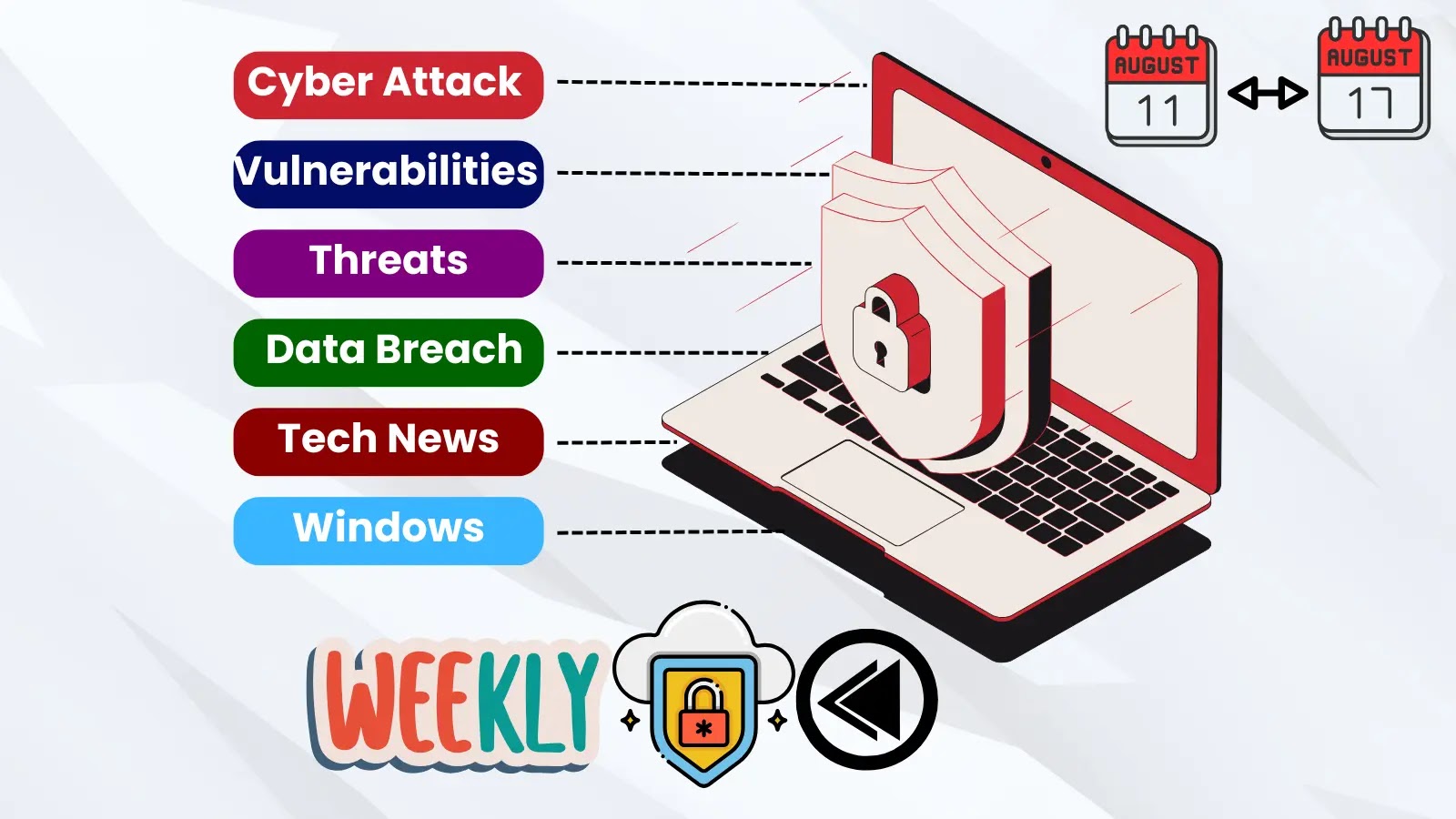
Weekly Cybersecurity News Recap : Microsoft, Cisco, Fortinet Security Updates and Cyber Attacks
The digital frontier is in a perpetual state of flux, and the week of August 11-17, 2025, vividly underscored this reality. Critical security updates from industry giants like Microsoft, Cisco, and Fortinet, alongside an uptick in sophisticated cyberattacks, painted a clear picture: proactive defense and swift remediation are not just best practices, but necessities. As cybersecurity professionals, staying abreast of these developments is paramount to safeguarding our digital infrastructure.
Microsoft Patch Tuesday: Addressing Zero-Days and Critical Flaws
August 12, 2025, marked Microsoft’s monthly Patch Tuesday, a day eagerly (and sometimes nervously) anticipated by IT departments worldwide. This cycle saw the release of fixes for over 90 vulnerabilities, a significant number reflecting the ongoing battle against software weaknesses. Of particular concern were several zero-day exploits impacting core Windows functionality and the widely used Office suites. These are vulnerabilities actively being exploited in the wild before a patch becomes available, making immediate action crucial.
- Strong emphasis was placed on patching vulnerabilities that could lead to remote code execution (RCE) and privilege escalation, the gateways for attackers to gain control over systems.
- While specific CVEs weren’t linked in the source, the mention of zero-days in Windows and Office suggests widespread potential impact. Organizations should prioritize updates for all Windows operating systems (CVE-202X-XXXXX) and Office applications (CVE-202X-YYYYY) as soon as patches are available and thoroughly tested.
Remediation Actions: Microsoft Updates
- Prioritized Patch Deployment: Immediately apply all Microsoft security updates, particularly those marked as critical or addressing actively exploited vulnerabilities. Utilize automated patching systems but ensure proper testing in a staging environment to prevent operational disruptions.
- Vulnerability Scanning: Regularly scan your network and endpoints for unpatched systems. Tools like Tenable Nessus or Rapid7 Nexpose can identify missing patches and misconfigurations.
- Endpoint Detection and Response (EDR): Ensure EDR solutions are up-to-date and actively monitoring for suspicious activities that might bypass traditional defenses, indicative of attempted exploitation.
- Principle of Least Privilege: Reinforce the principle of least privilege across all user accounts and services to minimize the impact of a successful exploit.
Cisco and Fortinet: Fortifying Network Defenses
Beyond endpoint and application security, network infrastructure remains a prime target. Cisco and Fortinet, pivotal players in enterprise networking and security, also released vital updates. These updates typically address vulnerabilities in their routing, switching, firewall, and VPN solutions, which are critical components for network segmentation and secure communication.
- Cisco’s updates often cover vulnerabilities in IOS/IOS XE, ASA, and FTD software, addressing issues ranging from authentication bypass to denial-of-service (DoS) and remote code execution. Administrators should consult Cisco’s Security Advisories page for detailed information (e.g., potential fixes for CVE-202X-ZZZZZ).
- Fortinet’s patches typically target FortiGate, FortiManager, and other Forti-series products, tackling vulnerabilities that could impact network security posture, such as those related to VPN access or administrative interfaces (e.g., CVE-202X-AAAAA).
Remediation Actions: Cisco & Fortinet Updates
- Firmware and Software Updates: Apply the latest firmware and software updates to all Cisco and Fortinet network devices. This should be done systematically, starting with non-critical devices or in a maintenance window to minimize disruption.
- Configuration Review: Revisit configurations of firewalls, VPNs, and network access controls to ensure they align with least privilege principles and block known malicious traffic patterns.
- Network Segmentation: Reinforce network segmentation to limit the lateral movement of attackers in case a perimeter device is compromised.
- Logging and Monitoring: Enhance logging on network devices and integrate logs into a Security Information and Event Management (SIEM) system for centralized monitoring and anomaly detection.
The Persistence of Cyber Attacks
The week also highlighted a surge in sophisticated cyberattacks, reinforcing the reality that even with timely patching, vigilance remains key. While specific attack details weren’t provided in the source, the phrase “surge of sophisticated threats” suggests a combination of evolving attack techniques and persistent adversary efforts.
- Known attack vectors include phishing campaigns leveraging social engineering to deliver malware, ransomware attacks encrypting critical data for extortion, and supply chain attacks targeting trusted third-party vendors.
- Threat actors continually refine their methods, employing advanced evasion techniques to bypass traditional security controls.
Remediation Actions: General Cyber Attack Posture
- Employee Training: Conduct regular, up-to-date cybersecurity awareness training for all employees, focusing on recognizing phishing attempts, social engineering tactics, and safe browsing habits.
- Multi-Factor Authentication (MFA): Implement MFA across all possible services, especially for remote access, cloud applications, and privileged accounts.
- Robust Backup Strategy: Maintain a comprehensive, tested, and air-gapped backup strategy. This is crucial for rapid recovery from ransomware or data loss incidents.
- Threat Intelligence Integration: Integrate reliable threat intelligence feeds into your security operations to stay informed about emerging threats, TTPs (Tactics, Techniques, and Procedures), and indicators of compromise (IoCs).
- Incident Response Plan: Develop and regularly test a detailed incident response plan. Knowing how to react swiftly and effectively during a breach can significantly reduce damage.
Key Takeaways for Cybersecurity Professionals
The second week of August 2025 served as a potent reminder of the dynamic nature of cybersecurity. Timely patching of critical vulnerabilities, especially those identified as zero-days and impacting widely used software and network infrastructure, is non-negotiable. Furthermore, a layered security approach encompassing robust patching, network segmentation, strong authentication, continuous monitoring, and proactive employee training forms the bedrock of a resilient security posture. The battle against sophisticated cyber threats is ongoing; our commitment to continuous improvement and adaptive defense must be equally relentless.





